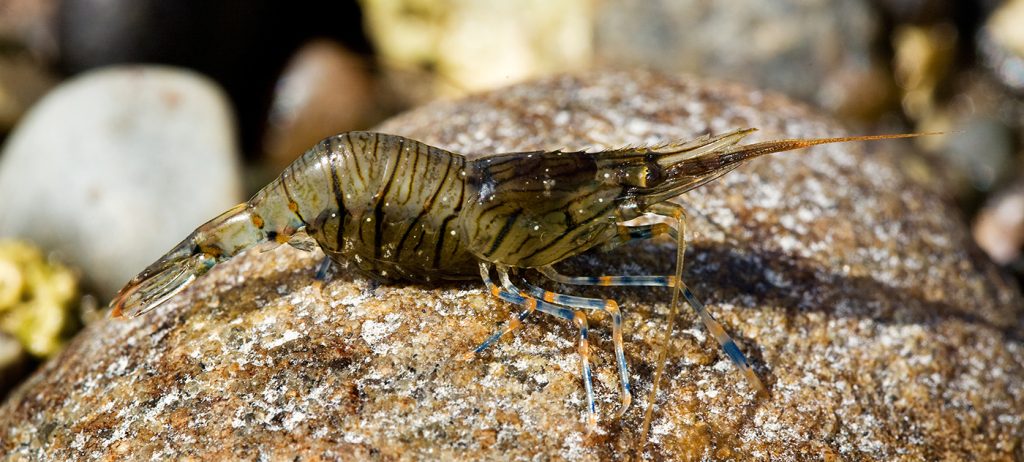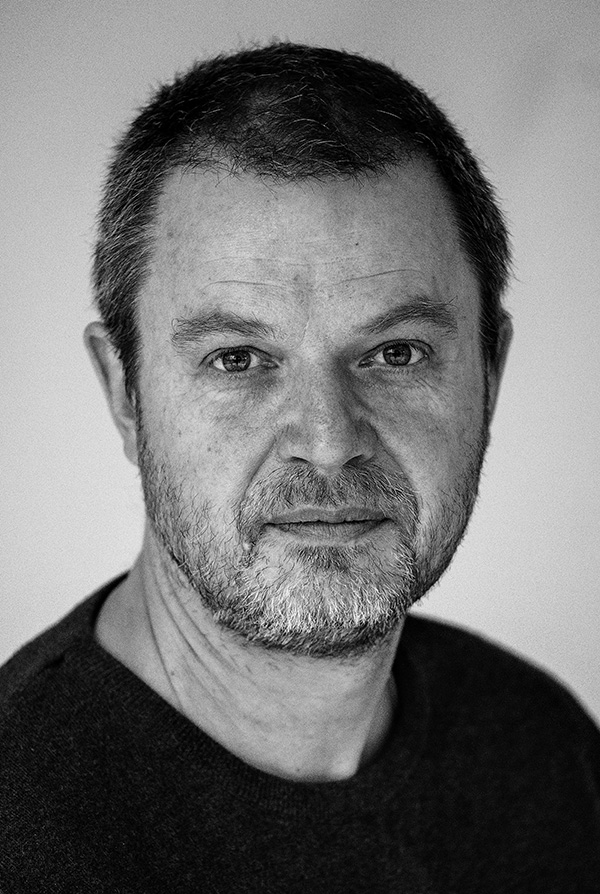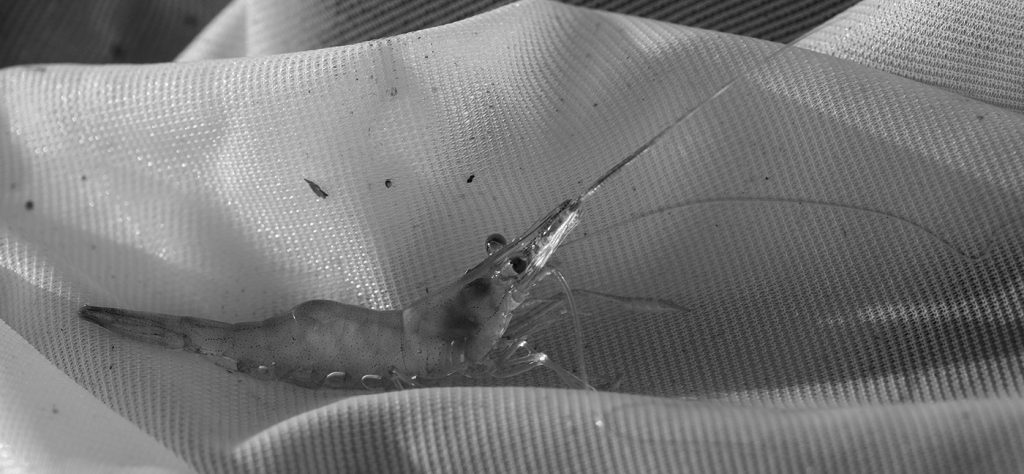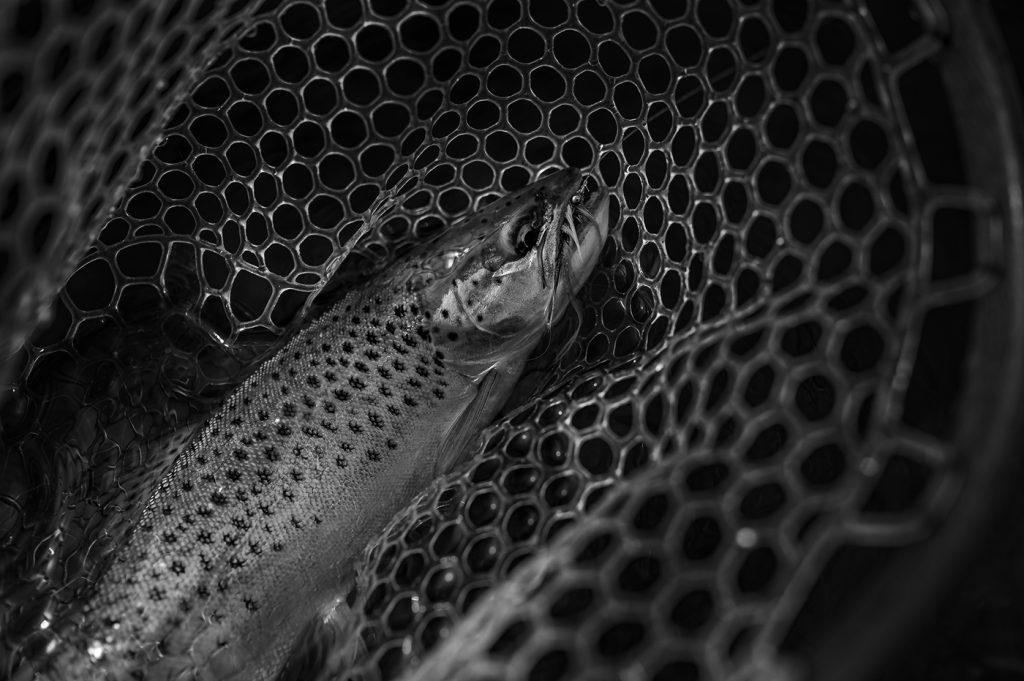
The question is not how to fish, but why you do it. The author and his fishing buddies do it out of necessity. It’s more important than life and death to them to escape the human world, step in to water and wave a stick. Left on the shore is their misery and worries. Standing in the water they find freedom, healing and occasionally a fish.
Battles are lost and won with tongue in cheek and always celebrated with mountains of cake and an endless stream of fresh espresso coffee. To the band of brothers it’s more important who you fish with than how big the fish is; except for the ones lost.
You may not learn a lot about catching more and bigger fish, but reading these stories is like holding a mirror up in front of yourself getting a little wiser. The small why is a big one.
- This artickel is written by Danish photojournalist Søren Skarby


Just call me lazy. I was standing in the water wondering what the sea trout were eating for lunch. Not fishing, just standing. The line was hanging downstream in the tidal current. My shrimp fly must have been moving it’s tail a bit sexily; suddenly there were Morse signals going through the line and rod and into my arm. I lifted the rod, pure reflex.
The fish was not big, but pretty strong for it’s size. After a short intense fight I released it back in the narrow canal we often fish in.
“It’s the eyes”, said my friend the electrician when I told him the story.
“No matter how hard you try and how good a fly tier you are, they will never be tied in perfect on both sides. The fly will always move from side to side because of them.”

He should know. The electrician is an able fly fisher, but place him in front a vice and he becomes a master. I dare to add that he in the recent years has moved a little further away from the table. His rating in Fulton’s condition factor has become a bit or two higher. When told, he answered laughing:
“I’m the finest summer trout anyone can ever catch.”
In one of my fly boxes sits one of the electricians shrimp flies. Every time I catch a glimpse of it, I mentally reach out for lemon and mayonnaise. You can fish it dead drift or even let it rest on the bottom; the fish will pick it up from the sand.
The fly is for sure an imitation in the words true meaning. The electrician is one of those fly tiers that order at least a thousand hooks in each size. At the vice he vanishes in a storm cloud of feathers and hair. In there things are going on at the speed of lightning, even when tying gets more than complicated. Every turn is made with the precision of a surgeon. He has a reputation for tying loads of flies in a very short time; like the weekend he produced 125 flat wing flies.
Lately the electrician has started making wally wings on … caenis imitations. He showed them to me and I offered him a lift to the local psychiatric ward. When the dust settles little beauties are shattered all over the table. Very often it’s shrimp flies. There’s a reason for it.
In the early seventies fly fishing for sea run brown trout in The Baltic Sea was like a smolt dipping it’s fins in saltwater for the first time. Everything was new and undiscovered land. Well, water to be specific.

Bait casters often asked the few with a fly rod, showing up at the coast, if they had lost their way. At the end of the tippet were English reservoir flies and classics like General Practitioner. The fact that the latter is imitating the boiled shrimps, that Scottish salmon fishers used, is a minor detail. Let it rest. The pioneers started looking in the water and the trout’s tummies. There were shrimps everywhere. At their vices they created simple palmer flies, which soon developed in to loads of different patterns. The evolution of shrimp flies had started.
Fly tiers are standing on the shoulders of each other. You can truly say that fly patterns are open source. Show a new fly to a fellow tier or two and it will transform and be improved at the pace of a fleeing trout. A few flies will keep their original shape. They have proven their value in battle after battle. One of the very few left from the early seventies, Magnus, is still on parade in loads of boxes. A grey grizzle palmer fly with chain eyes, simple and incredible efficient.
In wintertime it’s younger cousin shows up; the only difference is a pink front hackle. Those kinds of flies were the standard for years. Then the revolution arrived in the form of roosters looking like punks on a bad day. Spey hackles are not a new invention, but this time it wasn’t a herons soft feathers that gave life to the flies. It started with a pretty complicated fly, The Øland Shrimp; tying it isn’t a simple task. Then it got simplified and very pink.

The Pink Piglet was born and started, without exaggeration, a roaring fashion. Everybody was tying it and dipping it in water. When so many are fishing with the same fly, there’s a pretty good chance that somebody will catch something on it. Obviously it happened and the fashion grew even bigger. The whole fuss was a combination of good marketing, feathers from weird looking roosters and a fly pattern that is good thinking in front of a vice. I myself have tied my share of Pink Piglets and caught some nice trout on it, and it’s still in my box. But as every other fly fisher with a passion for sea trout, I had to make a shrimp pattern of my own.
It was one of those winter evenings, where the mercury is crumpling at the bottom of the thermometer. The wood burning stove was heating my back and the telly was showing a football match from a much warmer Spain. On the table was a vice, loads of feathers and a glass with four fingers of scotch. What could possibly go wrong?
In the beginning it was a Pink Piglet except that it wasn’t pink; it was grey and grizzled. Tied in the exact same way as the fashionable fly. I wanted to provoke a bit less and imitate a tiny bit more. Let’s call it a caricature.
Every good fly it developed over time and has a lot of fathers. My friends and fishing buddies, the electrician, the math teacher and the Dutch graphic designer suggested little changes that I adapted. After two years and quite some trout it found it’s final form and a name. In respect of The Pink Piglet and because of the colour it could only be The Wild Boar.
That was the fly that I caught a trout with without fishing. It’s always the first fly I tie to the tippet when I hunt for sea run brown trout. My fishing buddies have stopped asking which fly I fish with; they already know. Fashion is always on the move. That counts for fishing flies too. The blazing new thing is fluorescence. All tying materials have to reflect ultra violet light. I don’t care and keep on fishing with my dull looking shrimp.
But remember that all fishermen are liars; that counts for fly tiers too. The eyes of The Wild Boar are made of amnesia running line. Point an ultra violet torch at it and it will light up like crocodile eyes in an African river at night. Who wants to be corny?

